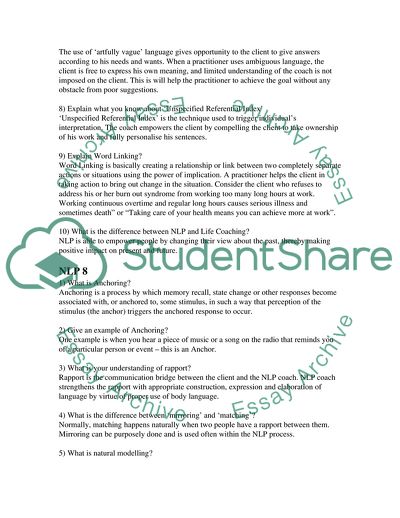Advantages of Neuro-Linguistic Programming Essay Example | Topics and Well Written Essays - 1500 words. https://studentshare.org/psychology/1718913-neuro-linguistic-programming
Advantages of Neuro-Linguistic Programming Essay Example | Topics and Well Written Essays - 1500 Words. https://studentshare.org/psychology/1718913-neuro-linguistic-programming.


